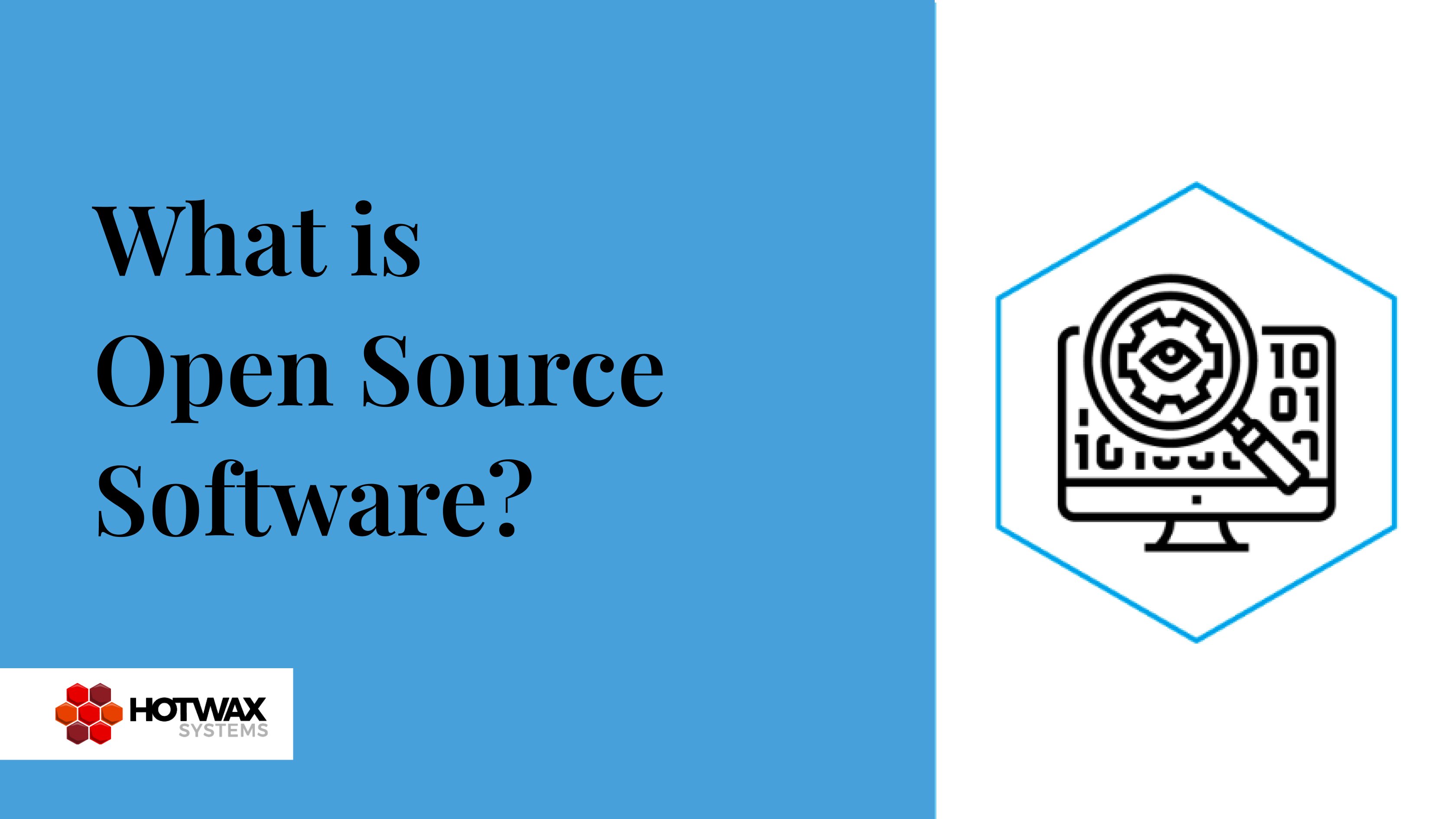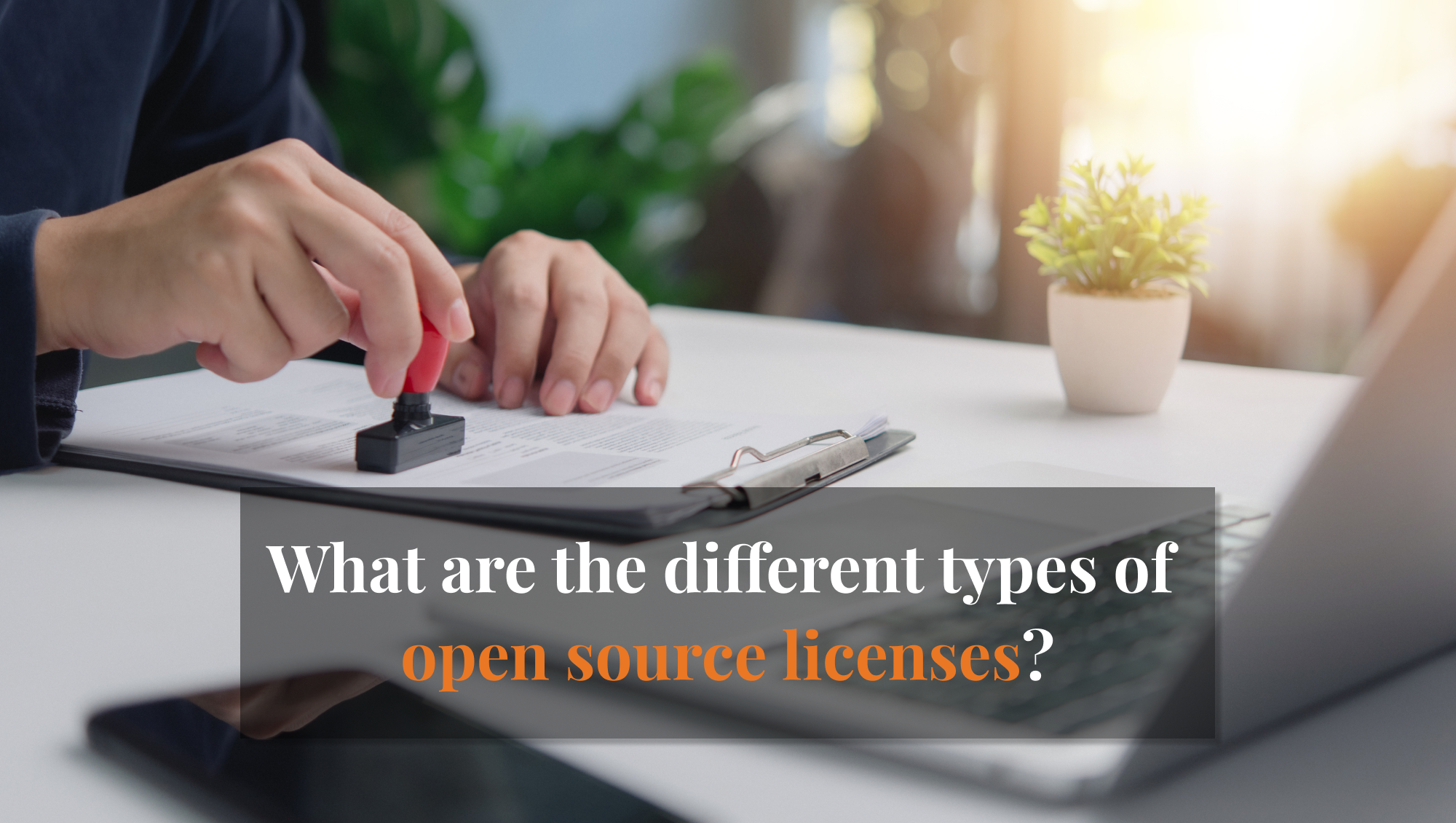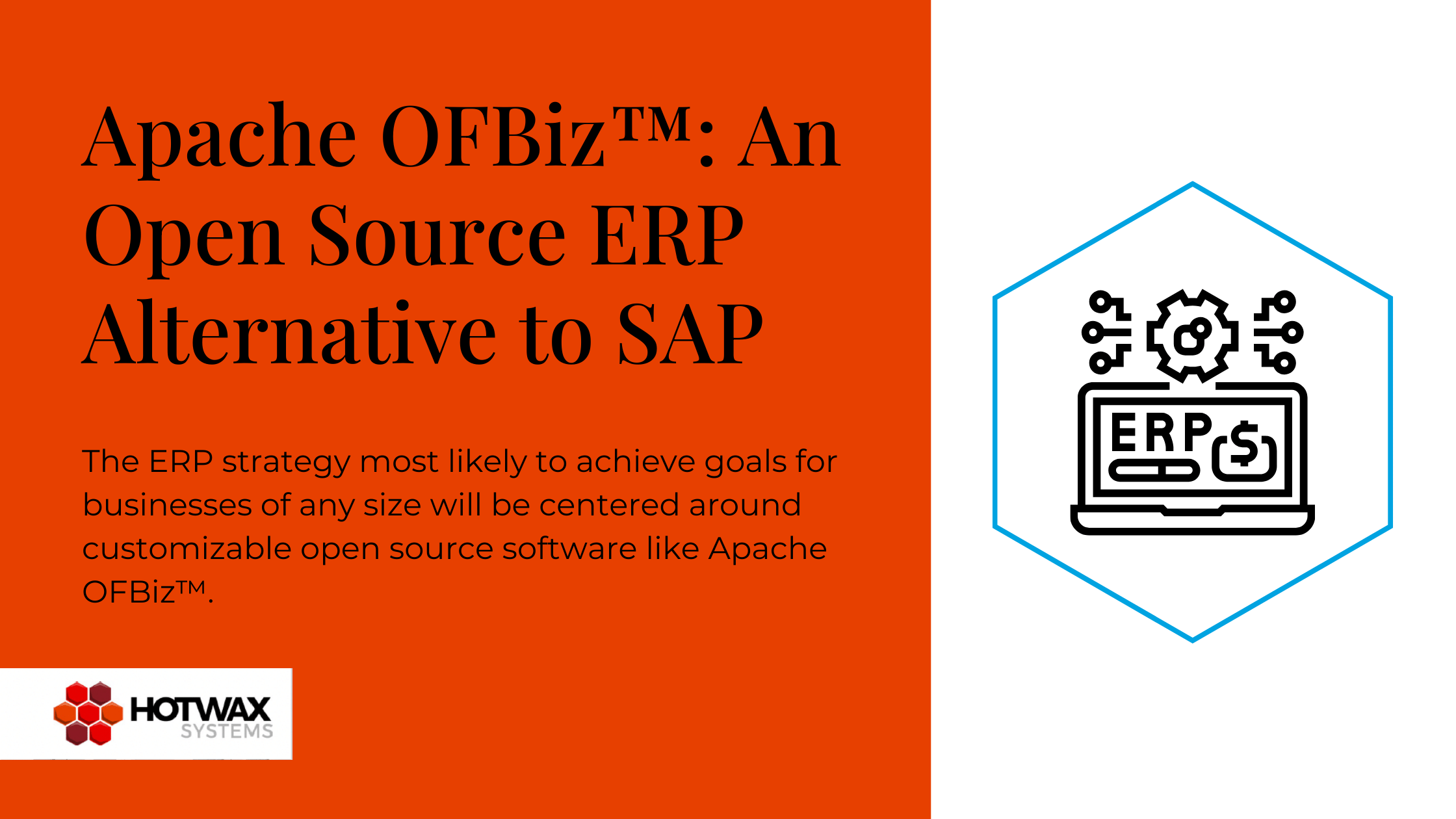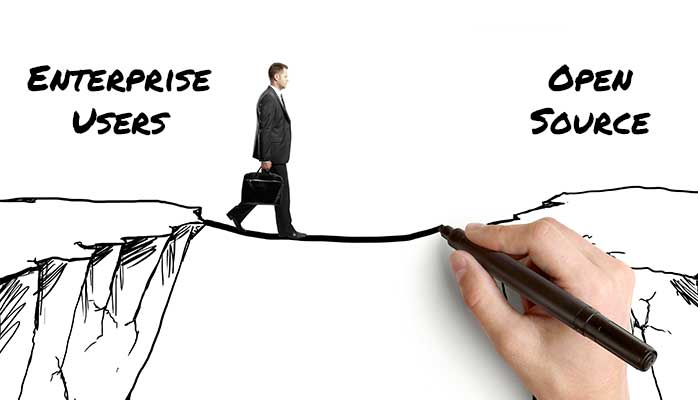Open source isn’t just about open-access software — it’s a global movement that powers modern technology across infrastructure, AI, business systems, and beyond. This in-depth guide unpacks the philosophy, history, licenses, community, security and business models behind open source and how it continues to shape the future of tech.
What is Open Source Software?
Open source software (OSS) is software whose source code is publicly accessible, allowing anyone to inspect, modify and redistribute it under an open source license. It promotes transparency, collaboration and innovation by enabling a community of developers and organizations to contribute and improve the software over time.
From the servers powering the internet to the AI tools reshaping industries, open source software is the critical infrastructure behind modern innovation. Unlike proprietary software, which restricts access to its code, OSS enables wide collaboration, adaptation and development.
A Brief History of the Open Source Movement
In the early days of computing, software was often openly shared. Developers at universities and research labs routinely exchanged code, not licenses. But by the 1980s, this culture began to shift. Software became commercial. Source code was locked away. Usage was restricted. That shift didn't sit well with everyone.
One of the most vocal critics was Richard Stallman, a programmer at MIT. In 1983, he launched the GNU Project, aiming to create a fully free operating system. Two years later, he founded the Free Software Foundation (FSF), built around four essential freedoms: to run, study, modify and share software without restriction.
However, the term "free software" caused confusion, as many mistook "free" to mean zero cost, rather than freedom of control. This made businesses hesitant to adopt it.
In 1998, a group of technologists rebranded the philosophy using a new term: open source. It preserved the same core principles but framed them in a way that resonated with enterprises. This led to the creation of the Open Source Initiative (OSI), and from there, open source took off.
One of the earliest and most successful open source projects was the Apache HTTP Server, launched in 1995. Its success led to the formation of the Apache Software Foundation (ASF) in 1999, which institutionalized open governance and merit-based contribution. Today, ASF supports hundreds of projects, all driven by volunteer contributors and a shared philosophy of "community over code”.
From Movement to Global Infrastructure
What started as a philosophy is now core infrastructure powering the digital world. From operating systems like Linux and programming languages like Python to web servers like Apache, database systems like PostgreSQL and modern platforms like Kubernetes and AI frameworks like TensorFlow and PyTorch, open source forms the backbone of global tech and innovation.
Today, OSS is not just a type of software; it's a way of building and evolving technology, backed by passionate communities and trusted by the biggest names in business.

Open Source vs Proprietary Software: What's the Real Difference?
Now that we’ve understood what open source software is and how it became a movement, it’s important to see how it compares with the model most of us are more familiar with: proprietary software.
Both models serve different purposes and come with their own set of trade-offs. Understanding their differences can help clarify why open source has grown in popularity across both personal and enterprise tech landscapes.
Open Source Software: Designed for Transparency and Collaboration
Open source software is developed with a model that encourages openness, accessibility, shared contribution, and meritocracy. Unlike most hidden, proprietary code bases, with open source, the best code wins. The source code is made publicly available, allowing individuals or organizations to inspect, modify, improve and distribute the software without restriction..
This collaborative structure allows for rapid innovation, peer-reviewed security and adaptation across a wide range of use cases: from academic projects to enterprise-scale deployments.
Well-known examples include:
- Linux (operating systems)
- Apache and NGINX (web servers)
- PostgreSQL and MySQL (databases)
- Mozilla Firefox (web browser)
- Kubernetes and Docker (cloud-native platforms)
- Apache OFBiz (ERP framework)
- Python, Rust, Node.js (programming languages and runtimes)
.png?width=700&height=525&name=Open%20source%20software%20examples%20(3).png)
Proprietary Software: Controlled for Consistency and IP
Proprietary software, also known as closed-source software, follows a centralized development model. The source code is owned and maintained by the organization that created it and is not available for public access or modification.
Users are granted a license to use the software, often under specific terms, but cannot view or change the inner workings. This approach ensures controlled user experiences, protects intellectual property and often comes bundled with structured support and service agreements.
Examples include:
- Microsoft Office
- Adobe Creative Suite
- SAP ERP
- Oracle Database
Quick Comparison Snapshot
Note: Open source software is always open to use and modify under its license. Business models may exist around it, but they do not alter the licensing terms.
|
Aspect |
Open Source Software |
Proprietary Software |
|
Source Code |
Open and publicly accessible |
Closed and restricted |
|
Customization |
High flexibility |
Limited or not allowed |
|
Licensing Fee |
Free of cost under OSI-approved licenses (always zero licensing cost) |
Paid or subscription-based |
|
Development Model |
Community and distributed |
Company-controlled |
|
Innovation Speed |
Iterative and community driven |
Internal and roadmap-driven |
|
Vendor Lock-in |
Low |
High |
|
Support |
Community + optional vendor support |
Vendor-backed (often contractual) |
|
Patent Protection |
Varies (e.g., Apache 2.0 includes it). |
Depends on vendor terms |
Choosing the Right Model: Proprietary vs Open Source
Each model has its place.
- Open source is ideal when flexibility, cost-efficiency, transparency and long-term scalability are important.
-
Proprietary software may be the better choice when out-of-the-box stability, vendor-backed support, or specific commercial features are needed.
In the next section, we’ll go deeper into the licensing and legalities that define open source because access alone doesn’t mean freedom unless it’s backed by the right legal framework.
Licensing & Legalities with Open Source Software
Every piece of software, be it open or closed, needs a license. Unlike physical goods, software is intellectual property, and a license is the legal contract that defines how it can be used.
In proprietary models, licenses typically restrict usage: they specify who can use the software, how, and under what conditions. You get access to the features, but not the source code behind them.
Open source turns this model on its head. The code is openly available, but still governed by licenses. These licenses protect contributors, guide how the software can be used, and ensure it remains open as the project evolves.
Because licensing is such a foundational topic, we’ve created a separate blog dedicated entirely to open source licenses. It covers the different types of licenses, their obligations, and real-world implications, and much more so you can gain a complete understanding of how these frameworks play out.
Open Source vs Open Standards
The term open gets used a lot in tech - open source, open APIs, open data, open platforms. But one of the most commonly confused pairings is open source software and open standards.
They sound similar and they often work together. But they’re not the same thing.
What are Open Standards?
Open standards are publicly available technical specifications that are developed and maintained through a collaborative and transparent process. They define how systems should communicate, format data or behave, so that different tools and technologies can work together, regardless of who built them.
Think of open standards as the common language that allows different software or hardware systems to understand each other.
Examples:
- HTML & CSS – for structuring and styling web pages.
- HTTP – the foundation of web communication.
- PDF – a universal document format.
- SMTP – the standard protocol for sending email.
Anyone can implement an open standard, it’s not tied to any one vendor or product.
How is that Different from Open Source?
While open standards define how things should work, open source software provides the actual implementation, the working code. Open source projects often use open standards, but they go one step further by making their code open for anyone to use, modify and distribute.
Put simply:
- Open Standards = shared blueprint
- Open Source = working machine built from that blueprint
You can have one without the other:
- A product can be open source but not based on any standard
- A product can be standards-compliant but built on proprietary code
Why the Distinction Matters
Understanding the difference helps businesses and developers make better choices:
- Open standards ensure interoperability and vendor neutrality.
- Open source provides transparency, flexibility, and control over the code.
Together, they create a more open, collaborative, and future-ready tech ecosystem.
Open source is more than a development philosophy, it's a foundation for modern innovation. Let’s look at how it’s making a tangible impact across sectors.
How Open Source is Used by Enterprises & Individuals
Open source is no longer just a development philosophy, it’s become the backbone of how modern software is delivered and consumed. From personal computing to enterprise infrastructure, open source powers critical tools used across industries and everyday life. Once a developer movement, open source is now the invisible architecture of modern life — from smartphones to supply chains.
Where Open Source is Used
Here’s how open source plays out in both enterprise and individual use cases:
|
User Type |
Common Use Cases |
|
Enterprises |
ERP systems, cloud infrastructure, containerization (e.g., Docker, Kubernetes), DevOps pipelines, web servers, database systems |
|
Individuals |
Operating systems (e.g., Linux), browsers (e.g., Firefox), media tools, office suites (e.g., LibreOffice), personal projects, learning tools |
Companies often integrate OSS into their tech stacks, while individuals rely on it for everyday productivity, learning and experimentation.
Why People Choose Open Source
The reasons for adopting OSS vary by audience, but the underlying value is the same: freedom to build, adapt and innovate.
|
User Type |
Why They Choose OSS |
|
Enterprises |
Cost-effectiveness, flexibility, no vendor lock-in, customization, scalability, auditability |
|
Individuals |
Unrestricted access, community support, learning opportunities, privacy control, lightweight tools |
.png?width=700&height=525&name=Open%20source%20software%20examples%20(1).png)
What are the Trade-Offs?
While open source brings a lot of flexibility, it's not without challenges.
- Support may vary depending on the project or vendor.
- Learning curves can be steep without documentation or training.
- Integration with proprietary systems may need customization.
That said, with the right implementation and partner support, many of these gaps can be closed and OSS often becomes a strategic advantage.
Next, we’ll look at how open source software is actually built—from idea to release, and beyond.
How Open Source Software is Built
Open source software might be free to use, but it's rarely free of structure. In fact, many of the world’s most reliable and widely adopted tools are built and maintained through highly organized, community-driven development cycles.
So how does a piece of open source software go from an idea to a robust, production-grade solution?
1. It Starts with a Problem or Vision
Every open source project begins with a need, a gap that someone, somewhere, decided to fill. Not for profit, but for purpose. That need could arise from:
- An individual developer solving a recurring issue
- A team building internal tools that prove useful beyond their organization
- A group of contributors aligned around a shared technical challenge
Regardless of the origin, the starting point is clear: a real-world problem waiting to be solved, publicly and collectively.
2. Code is Published and Shared
Once the initial version is ready, the code is released on platforms like GitHub, GitLab or Apache repositories. This stage includes:
- Choosing a license (e.g., Apache 2.0, GPL, MIT)
- Setting up project documentation
- Creating contribution guidelines
- Opening the project to the public
From here, the project becomes a living entity. Open to contributions, evolution and scrutiny.
3. Collaboration, Contributions and Versioning
This is where open source truly sets itself apart. Developers from around the world can:
- Submit improvements or fixes.
- Propose new features.
- Help with testing, localization, and documentation.
- Report bugs or suggest optimizations.
Changes are reviewed by maintainers, and only accepted contributions are added to the project’s official codebase. Software versions are released incrementally, based on roadmaps, milestones, or community feedback.
4. Governance and Long-Term Maintenance
Mature projects often adopt formal governance structures. Especially those under foundations like the Apache Software Foundation, which use well-defined processes to manage:
- Roles and responsibilities (maintainers, committers, release managers)
- Code of conduct and community guidelines
- Voting and decision-making protocols
- Release planning and documentation cycles
Long-term sustainability includes:
- Ongoing security updates
- Backward compatibility
- Integration with new standards or dependencies
- Responsiveness to user and developer communities

From Contribution to Continuity
Behind every successful open source project is a carefully balanced mix of openness and structure, designed not only to build software, but to maintain and improve it over time.
But great software doesn’t build itself. Next, we’ll meet the people who make open source work — its community.
The Role of Community in Open Source
Behind every successful open source project is a community, a diverse mix of developers, maintainers, testers, writers, users and advocates. Open source thrives on shared ownership and open collaboration, where contributions are welcomed from anyone and anywhere.
In many ways, the community isn’t just part of the project, it is the project.
Why Community Participation Matters
In open source, community members:
- Write and review code.
- Report bugs and security vulnerabilities.
- Improve documentation and onboarding.
- Offer user support through forums, chat groups and tickets.
- Shape the future roadmap through feedback and discussion.
The collective effort of these contributors helps projects evolve faster, adapt more broadly and remain resilient over time.
Types of Contributors in OSS Communities
Participants in open source communities include a broad range of roles:
- Core maintainers – individuals responsible for long-term technical stewardship.
- Occasional contributors – developers submitting fixes, features, or improvements.
- Technical writers and testers – enhancing clarity and ensuring stability.
- End users – providing feedback and assisting others.
- Corporate contributors – organizations that assign resources or sponsor development.
Some communities emerge organically, while others are supported by institutions or foundations. What unites them is a shared belief in collaboration over control.
Governance in Community-Led Projects
As projects mature, clear governance becomes essential to ensure fair decision-making and continuity.
This often includes:
- Defined contributor roles and responsibilities.
- Transparent decision-making processes.
- Community guidelines and codes of conduct.
- Structured release and roadmap cycles.
The Apache Software Foundation is a widely respected example of such governance. It follows a meritocratic model where contributors earn greater responsibility based on the quality and consistency of their participation.
For instance, Apache OFBiz, the open source business automation platform, adopts this structure. Contributors begin by submitting patches or documentation, and over time can become committers or maintainers based on technical merit and community trust. This framework allows Apache OFBiz to evolve reliably while remaining community-driven.

More than Just Code
Open source communities are built not only on technical contribution, but on shared values: transparency, inclusion and a willingness to build together. Many contributors start small and gradually become deeply invested in the project’s long-term success.
This sense of collective ownership is what makes open source both sustainable and scalable.
Open Source Business Models
A common misconception about open source is that it isn’t financially sustainable. Because the software is openly accessible for use, people assume there’s no business model behind it.
In reality, open source is the foundation of hundreds of successful, profitable companies. From ERPs and cloud infrastructure to AI tooling, many modern tech businesses are built on models that generate revenue while still keeping their software open and collaborative.
Open Source Doesn’t Mean Free of Cost Services
Open source software is always open to access, use, and modify under its license. However, businesses may charge for services or proprietary add-ons built around the OSS, which is separate from the OSS itself. The openness is in the code and licensing, not in the business value provided on top of it.
Popular OSS Business Models
|
Model |
How It Works |
Example Companies |
|
Support & Services |
Core software is free of costs; companies earn through consulting, training, and support |
Red Hat, HotWax Systems |
|
Hosted SaaS |
Free OSS + paid, fully hosted version with added convenience |
GitLab, Mattermost |
|
Open Core |
Base product is open source; premium features are proprietary |
Elastic, GitHub (partially) |
|
Dual Licensing |
Same codebase under both OSS and commercial licenses |
Qt, MariaDB |
|
Marketplace/Platform |
Open base platform + ecosystem of paid integrations or modules |
WordPress, Strapi |
These models allow companies to benefit from community contributions while still building predictable, scalable revenue streams.
Open Source and Security
Security is often one of the first concerns raised by people new to open source software. The common assumption is that if anyone can see the code, it must be easier to exploit. But in practice, openness often leads to stronger, more resilient systems, not weaker ones.
Unlike proprietary software, where security depends solely on the vendor, open source software benefits from broad visibility. With the source code available to all, vulnerabilities can be identified and fixed not just by attackers, but by developers, researchers, and ethical hackers around the world. This global scrutiny enables faster detection, public awareness, and community-led patching. A well-known example is the Log4j vulnerability, where the open source community responded within hours—patching the issue, publishing fixes, and sharing mitigation strategies—while many proprietary vendors took significantly longer to react.
That said, transparency alone doesn't guarantee safety. Like all software, open source tools require responsible maintenance, timely updates, and the right governance to remain secure over time. Many mature projects have dedicated security teams, structured disclosure processes, and well-maintained documentation to help users respond quickly when issues arise. When managed well, open source offers not just visibility, but a shared responsibility model, where security becomes a collective effort, not a closed-door risk.
Open Source and AI: Expanding the Frontier
As technology evolves, so do the questions around control, transparency and access, especially in emerging areas like artificial intelligence. No longer confined to research labs or large tech companies, AI is rapidly becoming embedded in business operations, customer experiences and public infrastructure. Once again, open source is playing a pivotal role in how this new wave of technology is being developed, shared and deployed. From large language models to lightweight toolkits and local deployment frameworks, open source is keeping AI innovation accessible, inclusive, and globally participative thus ensuring that it isn’t limited to those with the deepest pockets or proprietary platforms.
Just as open source shaped the cloud era and modern software tooling, it’s now defining how AI will be governed, scaled and trusted; with community insight, peer-reviewed improvements and global collaboration at its core.
Popular Open Source AI Models
Several high-performing open source LLMs (large language models) are now available for both research and real-world use:
|
Model Name |
Developed By |
Purpose |
|
Mistral |
Mistral AI |
Compact, fast-performing model, popular for edge and local use |
|
Gemma |
Google DeepMind |
Open source LLM designed for responsible AI research |
|
Falcon |
TII (UAE) |
High-performing open LLM, widely used in enterprise testing |
|
Command R / R+ |
Cohere for AI |
Optimized for retrieval-augmented generation (RAG) tasks |
These models provide an open alternative to commercial APIs like OpenAI’s GPT or Anthropic’s Claude. However do note that LLaMA (v2, v3) by Meta is source-available under a restrictive license, limiting commercial use, unlike fully open source models like Mistral or Gemma.
Frameworks and Toolkits Driving OSS AI
To build and deploy AI, developers rely on flexible tools—many of which are open source:
|
Tool / Library |
Use Case |
|
LangChain |
Connects LLMs with external tools, agents, and workflows |
|
Haystack |
RAG pipelines for search and question answering systems |
|
Transformers (by Hugging Face) |
Pretrained model access + training APIs |
|
llama.cpp |
Lightweight LLM runtime optimized for local CPU use |
|
ONNX / OpenVINO |
For model optimization and deployment across platforms |
These toolkits make it easier to build AI systems that are transparent, customizable, and performant across environments.
Running AI Locally: Tools for Individuals and Teams
Not every AI deployment needs the cloud. Open source tools allow even individual users or small teams to run models locally, improving privacy and reducing costs:
- Ollama – A streamlined interface to run LLMs like LLaMA, Gemma or Mistral on personal machines
- LM Studio – A desktop app to run, test, and interact with LLMs without writing code
- Text-generation-webui – A customizable web interface for running LLMs locally
These tools are helping developers and organizations build AI solutions on their own terms, outside the boundaries of big tech APIs.
The Future of AI Needs Open Source
As AI continues to evolve, so do the concerns around bias, control, access, and cost. Open source provides a path toward accountable and decentralized AI. One that isn’t dictated by a handful of closed platforms.
By making AI more transparent, adaptable, and accessible, open source ensures that innovation remains a shared effort, not a walled garden.
Next, we’ll look at one example of open source in action, Apache OFBiz; and how it represents the real-world potential of open technology in business.
Apache OFBiz - the Open Source Platform for Business
Apache OFBiz (short for "Open For Business") is an open-source business automation solution and rapid application development framework designed to manage a wide range of business functions. It comes with pre-built modules for:
- Order and inventory management
- Manufacturing execution and planning
- Procurement management
- Warehouse management
- Finance and accounting
- Human resources
- Customer Relationship Management
Rather than offering a fixed, off-the-shelf product, Apache OFBiz provides a foundational platform that businesses can adapt to fit their specific processes. Its modular architecture and open codebase make it especially suitable for organizations with unique operational needs.
Built with Open Governance
As a project under the Apache Software Foundation, Apache OFBiz is developed using a transparent, community-led model. Decisions are made openly, contributions are reviewed collaboratively, and long-term contributors gain governance roles through merit and trust.
This model ensures that the platform continues to evolve in response to real business challenges, guided not by vendor roadmaps, but by the needs of its users and contributors.
Why Enterprises Choose Apache OFBiz
Many businesses turn to Apache OFBiz when off-the-shelf ERP systems fall short. Its open source foundation allows them to:
- Customize workflows and data models.
- Integrate with third-party systems through APIs.
- Maintain full control over their business logic and infrastructure.
- Avoid vendor lock-in and recurring license costs.
However, do kindly note that its flexibility is subject to implementation quality and ongoing support, which is where expert partners like HotWax Systems come in.
HotWax Systems and the Apache OFBiz Ecosystem
HotWax Systems is a long-time contributor to the Apache OFBiz project and one of the most experienced implementation partners in the ecosystem. With deep technical expertise and a history of contributions to the Apache OFBiz community, HotWax Systems helps businesses:
- Design and implement business automation solutions using Apache OFBiz.
- Extend and customize modules to match domain-specific needs.
- Maintain, upgrade and scale systems over time.
This approach offers organizations the best of both worlds: the freedom and adaptability of open source, backed by expertise and long-term support.
In the final section, we’ll explore where open source is headed—and why its importance is only growing in the years to come.
Future Outlook and Conclusion
Open source has come a long way — from academic curiosity to powering mission-critical systems across the globe. What was once a grassroots movement is now the foundation for everything from operating systems and ERP platforms to cloud infrastructure, artificial intelligence and beyond.
But more importantly, open source is no longer just about saving costs or adding flexibility. It has become a way to build technology that is transparent and auditable, adaptable to specific industries and local contexts, resilient through global collaboration, and free from vendor lock-in or restrictive licensing. It offers not just an alternative, but a strategic foundation for long-term digital growth.
Open source, with its community-driven DNA and modular structure, is uniquely positioned to meet that challenge.
The Road Ahead
Looking forward, open source will continue to expand its role in shaping:
- Responsible AI development, where transparency and accessibility are critical.
- Decentralized platforms, as users demand greater control over their data.
- Tailored business systems, where flexibility beats one-size-fits-all solutions.
- Sustainable digital ecosystems, where innovation comes from shared effort and not just proprietary labs.
Open source isn’t just keeping pace with the future. It’s helping define it.
Closing Thought
As digital systems become more opaque, open source offers something increasingly rare: visibility and agency. Whether you’re an enterprise looking to modernize operations, a developer exploring new tools, or a policymaker thinking about digital sovereignty, open source is no longer the alternative. It’s the default, and it delivers.






